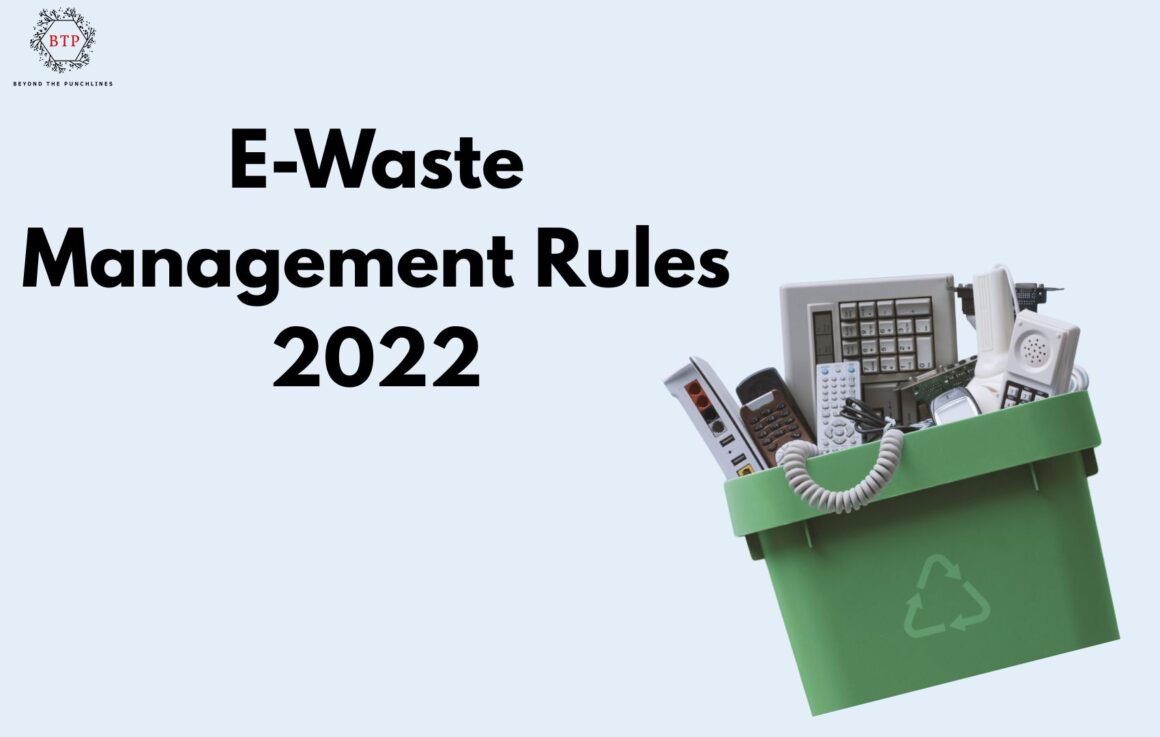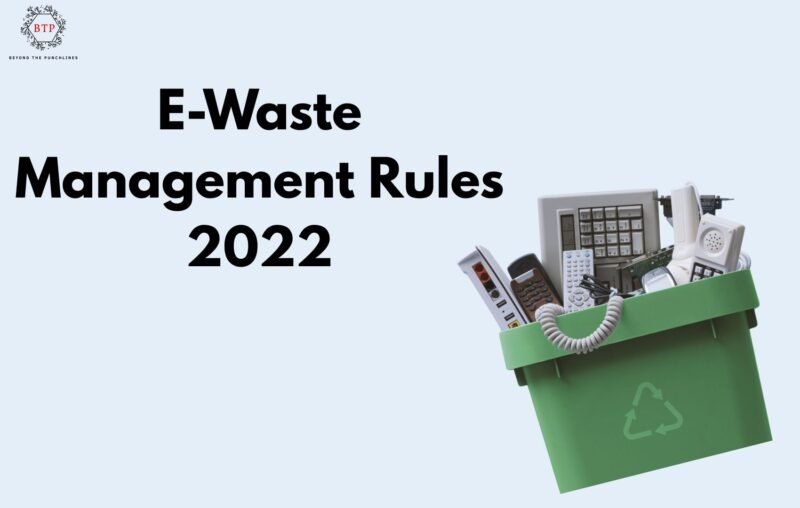
India’s rapidly growing electronics market has made e-waste management a national priority. With millions of tonnes of discarded electronic items generated annually, the country faced mounting challenges in collection, recycling, and environmental protection. The E-Waste Rules 2022 vs 2016 were the first structured framework to address this issue, focusing on producer responsibility and collection mechanisms. However, with the evolution of technology, new products, and sustainability goals, the need for a more robust system became evident.
Thus, the E-Waste Rules 2022 vs 2016 were introduced to strengthen accountability, promote circular economy practices, and digitalise compliance under the Central Pollution Control Board (CPCB). This article explores the major differences, improvements, and implications of the new rules.
Broader Scope and Inclusion of Emerging Technologies
Under the 2016 Rules, only 21 types of Electrical and Electronic Equipment (EEE) were covered — mainly large household appliances, IT devices, and consumer electronics. The 2022 Rules have expanded the list substantially, now including solar photovoltaic (PV) modules, panels, and cells, along with modern devices such as wearables and smart electronics. With the renewable energy industry booming, this inclusion ensures that solar and green energy technologies also adhere to responsible waste management.
Impact: By expanding its scope, the 2022 Rules close critical gaps and ensure that India’s waste management system keeps pace with the country’s digital and renewable growth.
Centralized Digital Registration through CPCB Portal
The 2016 Rules required multiple layers of authorization from both CPCB and SPCBs, leading to confusion and delays. Producers, recyclers, refurbishers, and dismantlers had to obtain separate licenses and maintain manual documentation.
The 2022 Rules streamline the process through CPCB’s online registration portal. All stakeholders — producers, recyclers, and refurbishers — must now register digitally and submit annual and quarterly returns online. This system allows real-time monitoring of e-waste flows, enhances transparency, and reduces paperwork.
Improvement: A single-window online system ensures better oversight, data reliability, and national-level traceability of waste movements.
Strengthened Extended Producer Responsibility (EPR)
The 2016 Rules introduced Extended Producer Responsibility (EPR) but lacked measurable accountability. Producers were required to develop collection systems and submit EPR plans, but there was little verification or consequence for non-compliance.
The 2022 Rules revolutionize EPR by mandating that producers meet quantifiable annual targets and obtain EPR certificates from registered recyclers. These certificates serve as proof of compliance and can be traded within the industry, creating a regulated market mechanism. Additionally, producers must file detailed compliance reports via the CPCB portal.
Key Update: The new EPR framework emphasizes performance-based compliance, creating financial incentives for proper recycling and penalizing non-performance.
Introduction of Environmental Compensation (EC)
In the 2016 Rules, penalties for non-compliance were vague and largely enforced under the Environment (Protection) Act, 1986. The 2022 Rules now explicitly define Environmental Compensation (EC), imposing structured financial penalties for violations like delayed reporting, shortfalls in EPR targets, or operating without registration.
The compensation collected is directed toward the Environment Relief Fund and used to enhance recycling infrastructure and public awareness initiatives.
Outcome: The new EC provision ensures accountability and strengthens deterrence against non-compliance.
Emphasis on Refurbishment and Circular Economy
In 2016, the focus was limited to collection and recycling, with minimal recognition of refurbishing activities. The 2022 Rules now introduce refurbishing certificates — if a product is refurbished, producers can defer part of their EPR obligation based on the extended life of the equipment.
This step promotes the circular economy model, extending product life cycles, minimizing raw material extraction, and reducing overall waste.
Impact: Encouraging reuse and refurbishment is a crucial shift from the traditional linear model of “use and discard” to “reuse, refurbish, and recycle.”
Inclusion of Solar Waste and Renewable Devices
The 2016 Rules did not account for waste from renewable technologies, even as India’s solar capacity surged beyond 70 GW. The 2022 Rules fill this gap by including solar PV modules, panels, and cells under the e-waste category. Producers of these products are now responsible for collection, dismantling, and recycling after their end-of-life.
Significance: This update aligns India’s environmental framework with global trends, ensuring that renewable growth does not create new waste streams.
Simplified Role of Bulk Consumers
Previously, bulk consumers such as government offices, banks, and IT firms were required to maintain extensive records and file reports annually. The 2022 Rules simplify their role — now, bulk consumers must only ensure that their e-waste is handed over to authorized recyclers or collection centers.
Effect: Reduced administrative burden encourages institutional participation and compliance.
Digital Monitoring and Traceability
Manual documentation under the 2016 framework often led to discrepancies and limited enforcement. The 2022 Rules address this by mandating a centralized online monitoring dashboard, integrated with EPR certificates and recycler data. CPCB can now track real-time compliance and issue alerts for non-performance.
Advantage: Improved data accuracy, enhanced traceability, and better policymaking through digital insights.
Stronger Enforcement and Penalty Structure
The 2022 Rules empower the CPCB and SPCBs to conduct audits, inspections, and random verifications. Non-registered operators face immediate suspension, while repeat violators may lose EPR certification and face EC penalties.
Outcome: The new enforcement structure creates a culture of compliance and credibility within India’s recycling ecosystem.
Addressing Informal Sector and Awareness
Despite regulatory progress, nearly 90% of India’s e-waste is processed by the informal sector using unsafe and polluting methods. While the 2022 Rules aim to formalize the system, integration of informal recyclers remains a challenge.
Public awareness and consumer participation are also essential. Without easy access to collection centers and awareness programs, household e-waste often ends up mixed with general garbage.
Need of the Hour: Collaborations between CPCB, local bodies, and NGOs can bridge these gaps and bring informal workers into the regulated ecosystem.
Key Achievements of E-Waste Rules 2022 vs 2016
- Expansion to include new-age and renewable electronics.
- Simplified registration and monitoring via digital portal.
- Measurable EPR targets and certificate trading.
- Stronger enforcement with defined penalties.
- Promotion of refurbishment and circular economy.
- Introduction of Environmental Compensation.
Result: A more transparent, digitalized, and accountable e-waste management framework aligned with India’s sustainability goals.
Challenges Ahead
While the E-Waste Rules 2022 vs 2016 are progressive, challenges persist in infrastructure, consumer participation, and state-level enforcement. Rural and semi-urban areas lack adequate recycling facilities, and coordination among SPCBs varies significantly. Effective capacity-building, technology deployment, and fiscal incentives will be crucial for long-term success.
E-Waste Rules 2022 vs 2016
The E-Waste Rules 2022 vs 2016 mark a transformative upgrade over the 2016 framework, aligning India’s waste management system with the principles of the circular economy and sustainable development. By expanding coverage, strengthening EPR compliance, digitalising processes, and incentivising refurbishment, the new rules provide the backbone for a cleaner and greener electronics ecosystem.
However, true success will depend on awareness, enforcement, and integration — ensuring that producers, recyclers, and consumers all play their part in reducing electronic waste. If effectively implemented, the 2022 Rules can position India as a leader in responsible e-waste management and a champion of sustainable innovation.
FOR MORE BLOGS – beyondthepunchlines.com

 Add to favorites
Add to favorites







